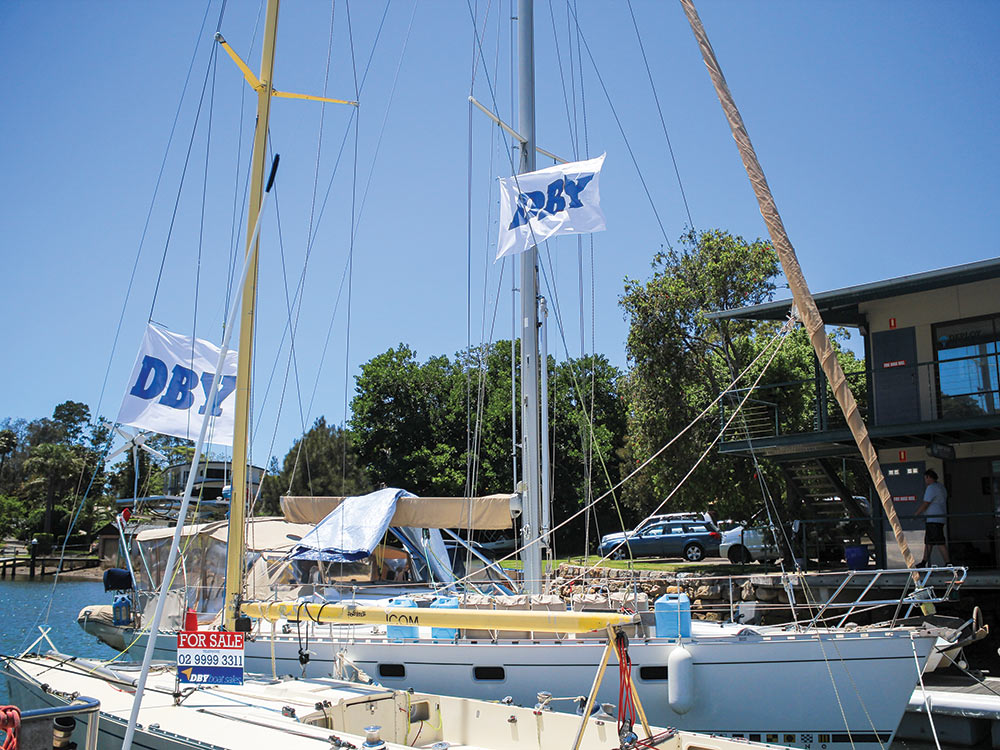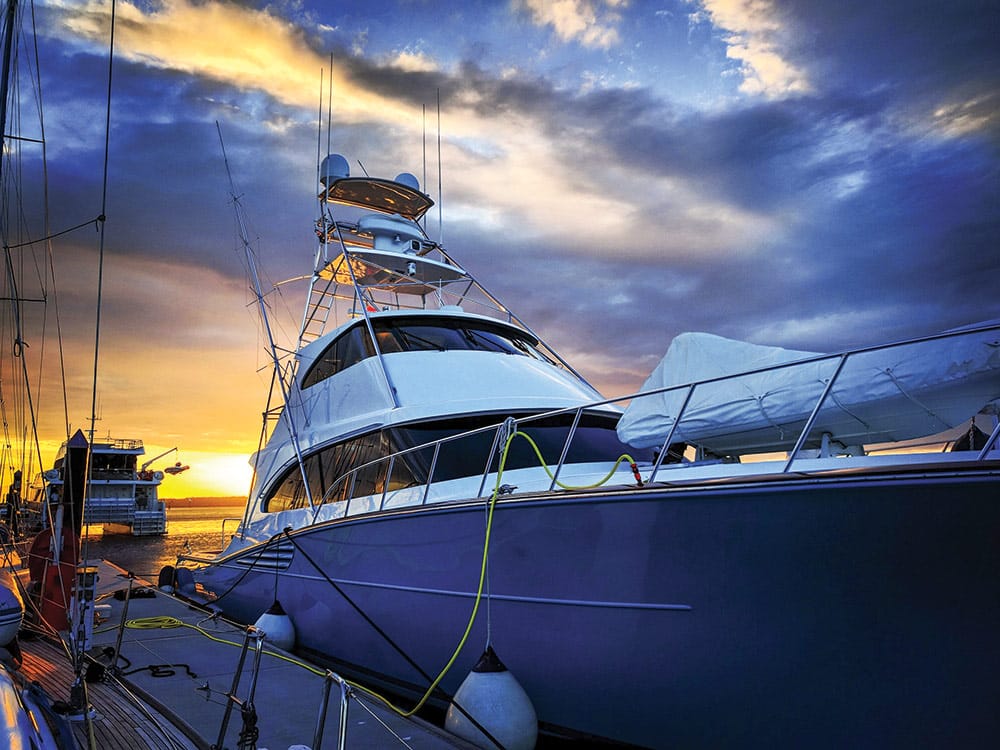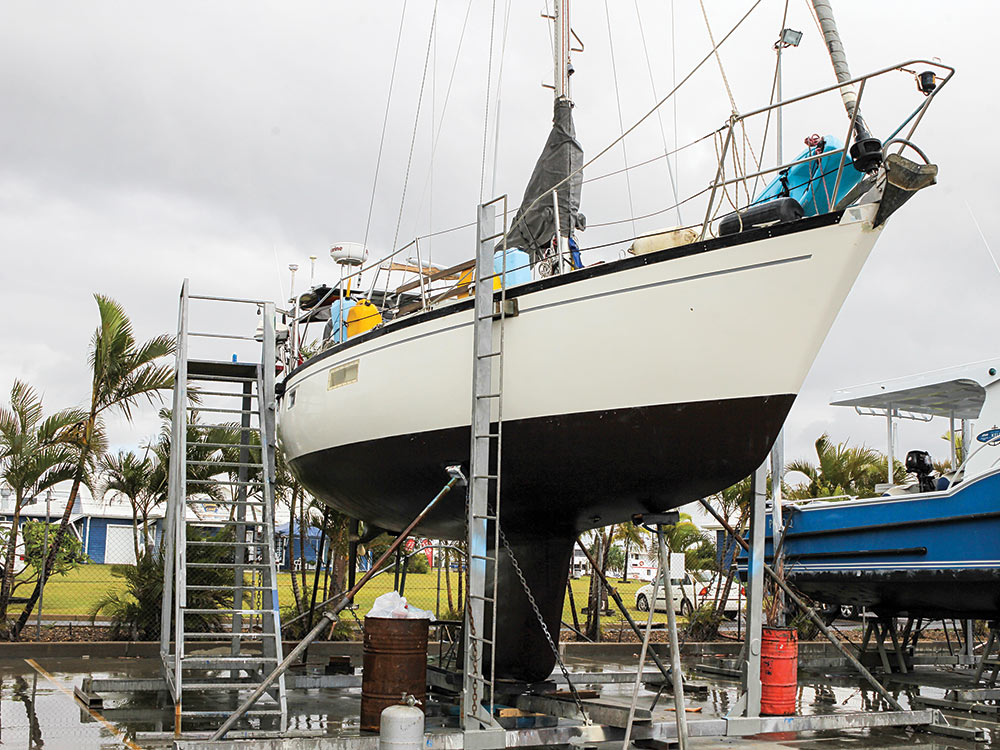
Australia, for many sailors, marks the end of a long, exciting and at times arduous journey across the Pacific Ocean. It’s also the first stop with a large enough population and wealthy enough economy to support a market for yachts. As such, many European and North American cruisers end their trips, and sell their boats, in Australia.
Amidst the post-passagemaking delirium and elation of completing a lifelong dream, a yacht owner must navigate the morass of Australian bureaucracy. This can be a pretty hard comedown after months of relatively free and easy movement through South Pacific countries and ports. All that is to say that a measure of foresight and preparation can go a long way in easing your crew and vessel’s entry into Australia.
My wife and I imported and sold our boat in Australia in the winter of 2017. The following is based on our experience. Note that policies and procedures can change from year to year, so ask other cruisers who landed there before you about their experience entering Australia.
Choosing a port of entry
Your port of entry will more than likely be determined by weather, route planning and the areas that you’d like to cruise. However, if you have some latitude in where you land, know that certain ports are easier to clear into than others. Some ports have a reputation for stricter officers and slower processing times. Ask cruisers who are ahead of you about their importation experiences to get a feel for the ports and their differences. Bundaberg, due to its proximity to New Caledonia, is the busiest port for yacht arrivals and has a good reputation with sailors.
Boat preparation, Customs
Australia is an island, albeit a very big one, and as such they are extremely careful about what comes into their unique environment. Biosecurity is the department in charge of inspecting vessels for foreign pestilence and can be an expensive hurdle if the proper precautions are not followed. There is an ever-changing list on the government website of what is allowed and what is not. Visit the Australian Border Force website for more information.
The Australian government requires cruisers to provide at least 96 hours’ notice prior to arrival. Arriving boats are placed in quarantine for inspection. Customs and border protection are the first to come on board. They are armed officers with a sniffer dog, looking primarily for drugs. Afterwards, a friendly customs officer will walk through the necessary paperwork for entering Australia.

The border protection officer will ask if you are planning to sell your yacht in Australia. If you say yes, you will be restricted to the port of entry until the importation process has been completed, which can take anywhere from three weeks to a few months. There is no penalty for saying you do not intend to sell your boat in Australia and then changing your mind at a later date. But, it is a bad idea to lie to customs and border protection, especially if the lie is easily found out; for example, if the boat is already listed for sale online prior to arriving. For this reason, many owners wait to list their boats for sale in Australia until after they have arrived. A vessel in Australian waters cannot be listed for sale in the country unless it has been imported.
Biosecurity
After being cleared by customs, next comes the biosecurity inspection. Yachts must declare all plant, food and animal material, and failure to do so can result in hefty fines. There is no penalty for unintentionally bringing banned items into the country, depending on the severity of the infraction.
The list of confiscated items on our boat included: a broom from Canada with millet fibers, a piece of drift wood, a large decorative pine cone and a raw food product including honey, potatoes and vegetable peelings.
The three options for dealing with confiscated products are to, if possible, have them treated (fumigated, irradiated) at your own expense, pay to have them exported or let biosecurity incinerate them. We opted for the last option as it was the only one that didn’t cost us more money.
Biosecurity charges $50 AUD for every 15 minutes they are on the vessel, with a minimum of 1 hour ($200). It is recommended to have prepared as much as possible in advance to make their job as easy as possible.
Many yachts coming from overseas have ants onboard. It is best to eradicate all insects prior to arrival in Australia. Five ants were found on our boat and caused us a month delay in importation while the boat was treated by an exterminator and reinspected.
Importation
The importation process can be complicated if you do it yourself. It requires a lot of paperwork and, in most cases, a valuation survey. In our discussions with yacht brokers and other cruisers, it was strongly recommended that we hire an importation broker, who can help the process go more smoothly and save costly delays. In most cases, without extenuating circumstances, the boat will be imported within 3 weeks.

We were quoted $800 to hire an importation broker in Sydney, but found one in Bundaberg who would do it for $300. Bundaberg is usually cheaper than Sydney for all services.
The valuation survey is conducted by an accredited valuation surveyor. The idea is to establish the value of your vessel so the government will know what taxes and duties should be charged. Often vessels are valued at much less than what they will be sold for to reduce taxes and duties for the importer. In our case, our 1979 Dufour 35 was valued at $19,000 AUD and we sold at $54,000 AUD. We have been told that the valuation typically comes in at half of what the boat will sell for. Nobody but you, the surveyor and a government representative will see the survey, so there is no risk of actually devaluing your boat to prospective buyers.
Seller’s Tip: Wait until after the valuation survey to tackle the project list.
Taxes and Duties
After the value of the vessel has been established you will be required to pay taxes and duties. The taxes due are 10 percent of the value, which applies to all imported vessels. A 5 percent importation duty is applicable to all vessels that do not have a free-trade agreement with Australia in place (Canadian and American-built vessels are as such exempt from duties).
In the case of high-value yachts, the taxes and duties can be deferred until after the sale of the vessel. The downside of this option is that the taxes and duties may be valued at what the boat sold for as opposed to the typically lower survey valuation. The difference can be many thousands of dollars.
Haulouts and Boatworks
We were shocked at how high the yard costs are in Australia versus North America. To launch and haulout our 35-foot sailboat we were quoted anywhere from $500 AUD to $1,300. In Sydney, typical haulout costs were $500-$600 AUD. Another expense we weren’t used to were the hardstand charges. In Sydney, the typical hardstand cost is $200 AUD per day. Further up the coast, prices decrease somewhat, reaching as low as $60 per day in Bundaberg (still triple what we are used to paying at home).
Prior to hauling out, it is a good idea to check with a boatyard what the work rates are and if you are allowed to do work on the boat yourself. We prefer to do the work ourselves, but were surprised that a few yards in Sydney would not allow this. In the end, we hauled out and worked at the yard in Bundaberg. The haulout and hardstand charges were the cheapest we found (we checked every boatyard on the east coast of Australia), and the staff were extremely friendly and helpful.
Another option is to do any boatworks in Fiji at Vuda Point Marina. In 2017, Vuda Point ran a deal where if you prebooked a haulout at the Tahiti-Moorea Sailing Rendezvous (tahiti-moorea-sailing-rdv.com) in June, you would only pay $50 for haulout and relaunch when you reached Fiji. Even at their full rates, this marina is a good deal. The disadvantages are getting parts to Fiji, which is sometimes slower than in Australia, and getting quality workmanship.
Markets
Australia presents the best market to sell a boat in the South Pacific. New Zealand is another popular option, but due to the lower population and weaker economy, boats usually take longer to sell and go for less. The case is even more pronounced in Fiji and New Caledonia where sellers can avoid importation duties, but may wait a long time for their boats to sell and usually at a significantly lower price than they would receive in Australia.
The best market in Australia is in the Sydney/Pittwater area. When we asked about the possibility of selling farther north in Brisbane, we were strongly advised that the boat stood a far better chance of selling if we made it down to Sydney. Our broker, who has an office in Brisbane as well, told us that owners who tried to sell their boats in Brisbane, often wound up paying a fortune to have them delivered to Sydney after they sat for months on the Brisbane market.
Most of the boats that came across the Pacific in 2017 sold within a few months of arrival for prices higher than they could have achieved in the North American market. Within our small group, a 1972 Swan 44 sold within two days of arriving in Sydney for over $130,000 AUD. Two 1979 Dufour 35s sold within two months for $53,000 AUD each. A mid-‘70s Crealock 37 also sold within a couple of weeks for well more than the owners bought it. Rod Waterhouse at DBY Boat Sales (dbyboatsales.com.au) estimates that the same boat will sell for 15 to 20 percent more in Australia than the west coast of the United States.
Other regulations
Australia requires gas and refrigeration certification for all non-Australian systems. In many cases, it is cheaper and easier to replace the stove with one bought in Australia, especially if the stove is quite old. The same may be true for the refrigeration system. Alternatively, the gas and refrigeration system can be approved by a certified inspector. To get our stove and propane system signed off cost $650 AUD, and we had a 2-year-old stove in perfect condition and new propane lines bought at West Marine.
Australia makes for a fantastic country to cap off your trip across the Pacific and provides a great market for selling your boat. Give yourself at least two months to import the boat and prepare it for sale. Once it’s on the market, a well-priced boat should take around three months to sell. If you do your research and move through the importation process without issue, you’ll be free to enjoy the Sydney Opera House, great Aussie beers, Kanga Bangas (kangaroo sausage) and all the other delights that Australia has to offer.
Robin Urquhart and his wife, Fiona McGlynn, cruised Mexico and the South Pacific. Learn more on their website.








